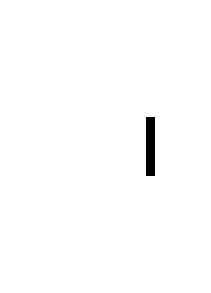T.O. 33B-1-1
5.5.3.3.4
If there are two or more areas on the test part of different thickness (within paragraph 5.5.3.3 limits) which
can be measured both ultrasonically and mechanically or optically, these areas may be used as the standards.
5.5.4
Test Part Preparation.
5.5.4.1
Surface Contamination.
All foreign matter that might interfere with the thickness measurements shall be removed. Examples of such
matter are loose scale, paint, dirt, and rust. For maximum accuracy, paint should be removed in the area to
be measured. Paint can introduce errors in the measurements up to three times the maximum thickness of
the paint. Metallic plating on the surface of the test part (Cr, Cd, Ni, etc.) will not significantly affect the
accuracy of the readings; this plating is usually relatively thin (0.0005 inch).
5.5.4.2
Surface Roughness.
The surface finish of the test part affects the accuracy of the reading as shown in Table 5-7. If the surface of
the test part is pitted or irregular, consistent readings will not be obtained. Variations as great as the depth
of the pits or irregularities will be introduced. If permitted by the applicable manual or the prime depot, local
areas may be sanded to provide smooth surface for increased accuracy in the thickness measurements.
5.5.5
Special Considerations.
5.5.5.1
Corrosion Pitting.
The effect on thickness measurements of corrosion pits on the back surface of the test part depends on the
size of the pits and the size of the search unit. The depth of large pits (search unit diameter or greater) can be
measured by subtracting minimum readings from maximum readings obtained on adjacent areas of the test
part. Smaller pits will generally cause a broadening of the back surface ref lection signals and sometimes a
reduction in amplitude, due to scattering of the sound beam. These effects can be observed on instruments
equipped with waveform displays. Smaller pits also lower the average thickness readings of the test part.
5.5.5.2
Curved Surfaces.
Measurements of curved surfaces require reference standards in accordance with paragraph 5.5.3.3.1. In
addition, for convex radii less than one inch or concave radii less than three inches, shoes are required to
adapt the search unit to the curved surface. In addition, detailed procedures for taking the measurements
must be obtained from the applicable NDI manual or the depot level engineering activity. On all curved
surfaces, it is recommended that an instrument with a waveform display be used. Small-diameter search
units (1/4 inch or less) are also recommended. When making a measurement on a curved surface, the back
surface signals should be maximized by rocking the search unit on the surface until the back surface signals
peak and the thickness reading is at a minimum. The minimum thickness reading should be recorded as the
test part thickness.
5.5.6
Calibration and Measurement.
NOTE
Accurate thickness measurements require that the reference standards and
the test part have temperatures equal within 10oF. Calibration shall be
performed in the same physical location as the measurements on the test part.
Adequate time should be allowed for the reference standards to reach the test
part temperature. When using puls-eco or resonance method to measure
thickness of materials, exact horizontal linearity of equipment is crucial and
must be checked prior to calibration and measuring thicknesses. See process
control chapter for procedures.
If only a basic ultrasonic instrument is available and no specific instructions are given, the following
procedure may be used.
a.
Obtain two reference standards in accordance with paragraph 5.5.3.3.
b.
Select a search unit that will resolve the back surfaces of the reference standards.
c.
Decide which divisions on the horizontal scale of the display graticule would be convenient locations
for the echo signals from the back surfaces of the references. For example, if the reference standards
Change 2
5-83

